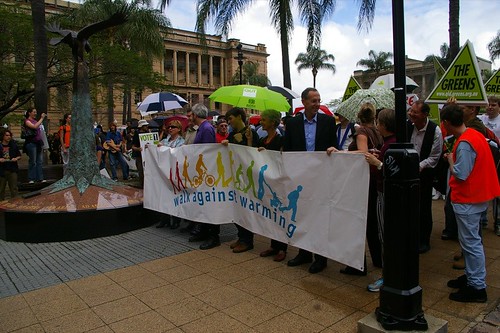05 February 2007
From Yorkshire today (UK).
We're increasingly made to feel guilty if we don't exercise enough or eat the recommended daily portions of fruit and veg, but what about the air we breathe? Chris Benfield reports.
We can eat organic. We can exercise. We can floss between our teeth. But we cannot do much about the air we breathe – and that is why a report from the University of Southern California has sent a shiver round the world.
It said that traffic fumes stop children's lungs from developing properly, so they become adults with a lifelong handicap, which might well contribute to other illnesses. The damage is "substantial".
If car exhausts can do that, what about the emissions from factories and incinerators, power stations, central-heating boilers and crop spraying?
There are good reasons to suspect they are all doing some similar damage. And now that the Californians have pinned down what it could be, and published it in The Lancet, no planning authority or politician can easily dismiss those suspicions again.
To the hard-liners of the clean-air lobby, this is like the moment when it became impossible to keep denying the link between smoking and lung cancer.
Others think bad air is the biggest single reason for the unusual rates of birth defects, heart disease, asthma, cancer, and other afflictions, which generally mark out the areas of low house prices on maps of Bradford, Sheffield and Leeds.
Bradford's infant deaths rate is so exceptional that it prompted an inquiry, which recently concluded that the problem was poverty. That is what these inquiries usually conclude. And most of us nod in understanding at the coded reference to damp, drugs, bad food, cigarettes and depression.
But the blips in the statistics also crop up in unexpected places.
Suppose they are all places where the winds connive to drop the fall-out from, say, a cement works, a motorway, a distant power station and half-a-dozen other sources of invisible gases and micro-particles? Would anyone know?
The monitoring of air pollution is still a developing science and it is hard to get enough figures on enough indicators, from enough places over enough time, to make useful comparisons.
Once upon a time, pollution meant what you could see and taste – smoke, soot, coal-dust, sulphur, smog. When the worst of all that was filtered out of industry's exhaust pipes, it felt like we owed ourselves a bit of a break from worrying.
Trouble is, according to the pessimists, we were left with the kind of petro-chemical fall-out which was dangerous because we could not stop it or see it. It could travel anywhere on the wind, and once it came down, it could get into the tiniest tubes in the furthest reaches of our airways, and from there into bloodstream, stomach, heart and nervous system.
To most of us, this sounded like the kind of doom-mongering which accompanies every step towards the future. And the politicians and their scientific advisers were happy to go along with us. There is no such thing as zero risk, they said. You have to pay some price for prosperity.
As far as anyone could tell, that price was so negligible it could not be measured. Therefore, the solution to the traffic problem in the 1990s was building roads, and the solution to the rubbish problem in the 2000s is burning it.
Or it was, until last week, when The Lancet gave every parent and grandparent in the land a good reason to climb down onto the hippy side of the fence.
...
Read the article.
Tuesday, February 06, 2007
Trouble with the air we breathe
Posted by
National Enquirer
at
10:45 pm
![]()
Labels: air pollution, asthma, cars, disease, environment, illness, lancet, pollution
Subscribe to:
Post Comments (Atom)





No comments:
Post a Comment